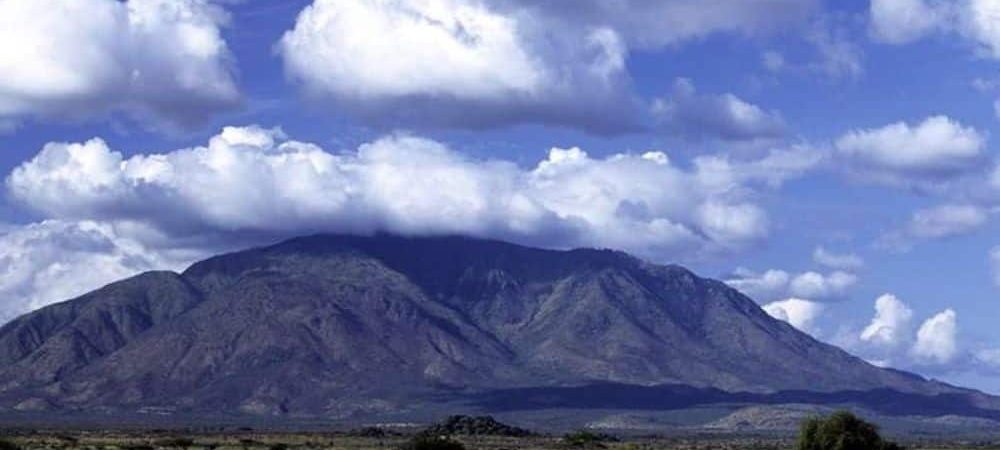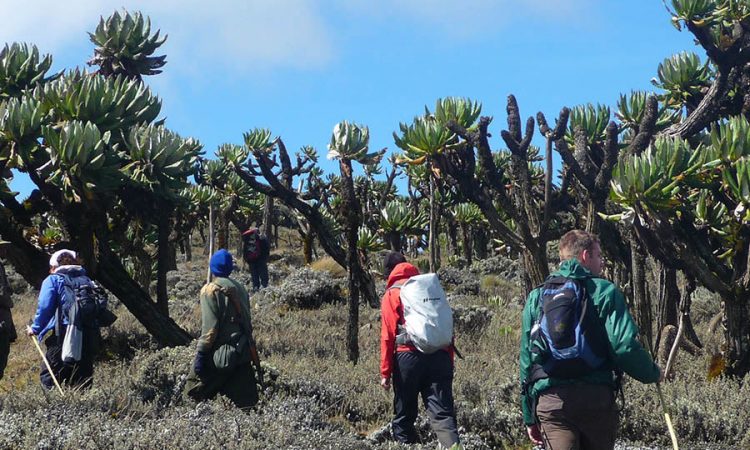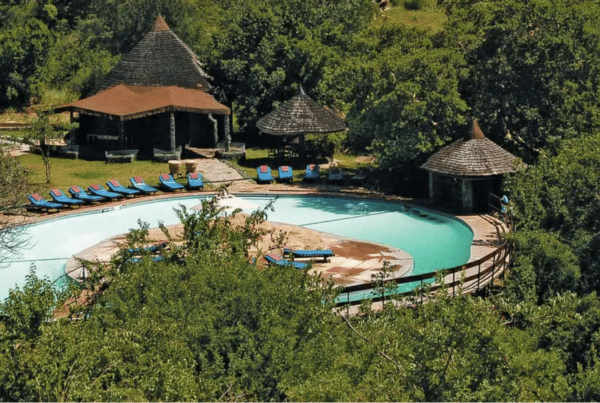Hiking Mount Elgon: A Complete Trekking Guide
The Call of Africa’s Forgotten Giant
Hidden in the eastern reaches of Uganda and stretching across the border into Kenya lies Mount Elgon, an ancient and often overlooked volcanic giant that rises above the landscape with quiet majesty. Though less famous than Kilimanjaro or Mount Kenya, Mount Elgon holds an allure of its own, marked by its vast caldera, enchanting forests, and a trekking experience that is at once wild, intimate, and rewarding. Those who venture onto its slopes are not drawn by record-breaking heights or crowded trails but by the opportunity to immerse themselves in nature’s raw elegance and cultural depth.
To hike Mount Elgon is to embrace a journey into the past—into a mountain so old that erosion has softened its once-dramatic volcanic features into gentle rolling plateaus, sweeping valleys, and waterfalls cascading through thick montane forests. It is a trek that reveals not just geographical beauty but also the cultural heritage of the Bagisu and Sabiny peoples who live at its foothills. This is not a hurried race to the top; rather, it is a contemplative exploration of a living landscape, one that rewards patience with serenity and wonder.
Location and Geographical Significance
Mount Elgon straddles the border of eastern Uganda and western Kenya, its vast base sprawling far wider than any other mountain in East Africa. Unlike the conical peaks of Kilimanjaro or Mount Kenya, Elgon is defined by its massive caldera, considered one of the largest in the world, spanning approximately 60 kilometers in diameter. At its summit, known as Wagagai Peak on the Ugandan side, the mountain rises to 4,321 meters above sea level, a height that commands respect but remains accessible even to those who are not seasoned climbers.
Geologically, Mount Elgon is among the oldest extinct volcanoes on the continent. Its origins date back more than 24 million years, making it significantly older than its more famous East African cousins. Over time, relentless erosion has carved out deep gorges, sculpted towering cliffs, and created an ecological haven that harbors countless plant and animal species. Its location on the Uganda-Kenya border has also imbued it with cultural significance, forming a natural boundary while uniting communities through shared traditions tied to its slopes.
The Allure of Mount Elgon National Park
To trek Mount Elgon is to enter Mount Elgon National Park, a protected sanctuary of remarkable biodiversity. On the Ugandan side, the park covers 1,110 square kilometers, while on the Kenyan side it extends over 169 square kilometers. The Ugandan section in particular is celebrated for its varied ecosystems, ranging from lowland forest and bamboo zones to high-altitude heath and moorlands.
As trekkers ascend, they pass through distinct vegetation belts, each offering unique encounters. The lower slopes teem with lush montane forests filled with primates such as blue monkeys, black-and-white colobus monkeys, and countless bird species. Higher up, bamboo belts sway in the cool mountain breeze before giving way to moorland plateaus covered in giant lobelias and groundsels, plants adapted to extreme altitudes and striking in their otherworldly forms. The sheer diversity ensures that the climb is never monotonous but constantly shifting, each zone a new discovery.
The park is also home to wildlife such as elephants, buffaloes, bushbucks, and forest hogs. While these animals are more elusive, their presence adds to the wild character of the trek. For bird enthusiasts, Mount Elgon is a true paradise, with more than 300 recorded bird species, including the rare Jackson’s francolin, the endangered lammergeyer, and vibrant sunbirds that flit among the alpine flora.
Routes to the Summit: Pathways into the Wild
There are several trekking routes to Mount Elgon’s summit, each offering unique perspectives and challenges. While all paths lead to the caldera and Wagagai Peak, the journey varies depending on the chosen trail, shaping the experience in profound ways.
The Sasa Trail: The Classic Ascent
The Sasa Trail, starting from Budadiri town, is the shortest yet most demanding route. It is often described as a direct gateway to the summit, requiring trekkers to ascend steeply through farmlands, bamboo forests, and montane vegetation. The rapid gain in altitude can be strenuous, but the reward is immediate immersion into the heart of Elgon’s wilderness. Along the way, the trail passes by the stunning Mude Cave, a traditional campsite for climbers that carries echoes of centuries of use by locals and explorers alike.
The Sipi Trail: Scenic and Gradual
The Sipi Trail begins near the picturesque Sipi Falls, a series of three dramatic waterfalls that tumble from the slopes of Mount Elgon into the valley below. This route is longer and more gradual, offering trekkers the chance to ease into the ascent while savoring breathtaking views of cascading water, fertile farmlands, and distant plains. For those seeking a balanced blend of cultural immersion and natural beauty, this is a favored option.
The Piswa Trail: Remote and Untouched
The Piswa Trail, accessed from Kapkwata village, is known for its remoteness and solitude. It winds through less frequented paths, taking climbers past spectacular bamboo forests, open moorlands, and rare wildlife habitats. It is longer than the Sasa Trail but gentler in its ascent, making it appealing for those who wish to immerse themselves in Elgon’s quieter corners.
The Trans-Border Trek: Crossing Uganda into Kenya
For the adventurous, Mount Elgon offers the rare experience of a trans-boundary trek, starting from Uganda and ending in Kenya—or vice versa. This route allows trekkers to explore both national parks and experience the unique perspectives each side of the mountain provides. Crossing the caldera from one country to the other adds an extra dimension to the adventure, blending natural wonder with cross-cultural encounters.
The Summit Experience: Wagagai and Beyond
Reaching the summit of Mount Elgon is not marked by sharp, icy ridges or treacherous climbs but by a gradual arrival at the expansive Wagagai Peak, perched at 4,321 meters. The experience is characterized by quiet triumph rather than adrenaline-driven conquest. Standing at the summit, trekkers gaze into the vast caldera below, a depression so wide and ancient that it feels like stepping into a geological time capsule.
From the rim, views stretch across the rolling Ugandan plains and, on clear days, into western Kenya. Unlike the often-crowded summits of other African peaks, Wagagai offers space for reflection, solitude, and the opportunity to absorb the profound silence of the highlands. Around the summit, unique plant species thrive in the moorland environment, their resilience a reminder of nature’s adaptability in extreme conditions.
Cultural Significance of Mount Elgon
Mount Elgon is not only a natural wonder but also a cultural landmark deeply woven into the traditions of the Bagisu and Sabiny communities. The Bagisu people, also known as the Bamasaba, regard the mountain as a sacred entity. Its slopes provide fertile land for farming, and its caves have historically served as shelters and ceremonial sites. One of the most famous cultural practices of the Bagisu is the imbalu circumcision ritual, a rite of passage into manhood that takes place in the foothills of Elgon. This ceremony, accompanied by music, dance, and vibrant community gatherings, draws visitors from across Uganda and beyond.
The Sabiny, residing on the eastern side, have their own cultural traditions tied to the mountain, including agricultural practices and folklore that connect their identity to the land. For trekkers, the cultural encounters along the lower slopes enrich the journey, transforming the hike into more than a physical adventure—it becomes a passage into the living heritage of Uganda.
Attractions Along the Way
Hiking Mount Elgon is never limited to the summit alone. The mountain offers a wealth of attractions that unfold along the trek, each adding depth to the experience.
The Sipi Falls, perhaps the most famous of Elgon’s features, cascade dramatically from the cliffs, creating misty rainbows and opportunities for rest and reflection before or after the climb. The caves of Elgon, such as Kapkwai and Tutum caves, carry both geological intrigue and cultural stories, having been used as shelters by both wildlife and early human inhabitants.
High on the slopes, trekkers encounter spectacular valleys carved by ancient glaciers, such as the Simu Gorge, whose steep walls rise like cathedral pillars. The hot springs at higher elevations provide another highlight, offering warmth in the cool mountain air and a sense of the volcanic forces that once shaped the landscape. Each of these features transforms the climb into an unfolding story, where every step reveals a new chapter of natural and cultural wonder.
Preparing for the Trek: Physical and Practical Considerations
Though Mount Elgon is considered one of the more accessible high-altitude climbs in East Africa, preparation remains essential. The trek may not demand technical climbing skills, but the physical challenge of multiple days of hiking at increasing elevations cannot be underestimated. Trekkers are advised to build endurance through regular walking or hiking before embarking on the journey.
In terms of equipment, the mountain’s varied environments require careful packing. Warm clothing is necessary for the cold nights at higher altitudes, while light gear is suitable for the warmer forest zones. Reliable trekking boots, rain protection, and sleeping gear are indispensable. Because Mount Elgon is less commercialized than other African peaks, trekkers can expect a more rustic experience, with campsites rather than lodges along the trail.
Acclimatization is another key factor. While Elgon’s altitude is not as extreme as Kilimanjaro’s, its summit still exceeds 4,000 meters, a height where altitude sickness can occur. Choosing a longer route, such as the Sipi or Piswa trail, allows climbers to ascend more gradually, reducing risks and enhancing the experience.
Best Time to Hike Mount Elgon
The climate of Mount Elgon is shaped by Uganda’s equatorial location, which brings two rainy seasons: from March to May and October to December. During these months, trails can become slippery and more challenging, though the mountain remains open to trekkers. The best periods for climbing are the dry seasons, from June to August and December to February, when conditions are more stable, skies clearer, and views more rewarding.
Even during the dry months, temperatures at higher altitudes can drop significantly, particularly at night, requiring trekkers to be well-prepared for the cold. Lower down, the forests remain lush and green year-round, ensuring that the mountain never loses its beauty regardless of season.
The Experience: A Journey of Reflection
To trek Mount Elgon is not merely to conquer a peak but to engage in a dialogue with nature and culture. The mountain encourages a slower pace, one that prioritizes discovery over speed. Days on the trail are marked by encounters with hidden waterfalls, glimpses of shy wildlife, and quiet moments in vast landscapes where silence feels sacred. Unlike more commercialized climbs, Elgon allows trekkers to feel part of the wilderness rather than visitors passing through.
The intimacy of the experience is heightened by the cultural connections forged in the foothill communities, where hospitality is generous, and traditions are shared openly. Every step on Mount Elgon feels like a step into a deeper understanding—not only of nature’s grandeur but also of humanity’s enduring bond with the land.
Answering the Call of Mount Elgon
Mount Elgon may not boast the fame of Africa’s tallest peaks, but in its quiet way, it offers one of the continent’s most profound trekking experiences. Its ancient caldera, diverse ecosystems, cultural heritage, and relative solitude create a journey that is both physically rewarding and spiritually enriching. It is a mountain that does not rush its visitors but welcomes them to walk gently upon its slopes, to listen to the whispers of its forests, and to stand in awe upon its summit.
For travelers seeking not just a climb but an immersive encounter with Africa’s wilderness and culture, Mount Elgon stands as an unforgettable destination. To fully experience its wonders with expert guidance and seamless arrangements, it is highly recommended to book treks and wider African adventures through WildHorn Africa, a trusted provider of tours and safaris that ensures every journey becomes a cherished memory.





 WildHorn Africa – Authentic and unforgettable tours across Africa, guided by local experts who know the land, wildlife, and culture best.
WildHorn Africa – Authentic and unforgettable tours across Africa, guided by local experts who know the land, wildlife, and culture best.


